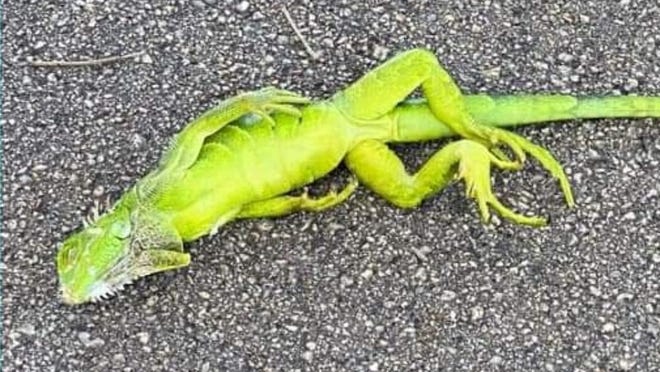JACKSON, Miss. — It’s likely one of the rarest rattlesnakes most people will ever see. With a genetic condition that left the timber rattlesnake with a creamy blond appearance, it stands out in the wild and statistically speaking, should not have survived.
However, this one survived to adulthood and was captured and relocated to the Mississippi Museum of Natural Science where it is now on display.
“There are people coming in to specifically see the snake,” said Jamie Merrill, conservation associate biologist with the museum. “It’s a gorgeous snake. People think it’s beautiful.”
Merrill said the snake has a genetic condition called T-positive, which makes its coloration quite different from normal timber rattlesnakes.
Rare snake find: Rarest snake in North America photographed after choking to death on giant centipede
What is the most venomous snake in the world?: Meet the inland taipan (if you dare)
A rare snake
“It’s a reduction of pigment, not a total loss of pigment,” Merrill said. “He is off-white with tan chevrons.
“T-negative would be a total loss of pigment. T-positives are a little more rare than T-negatives.”
Herpetologist Terry Vandeventer of Terry also said it is rare; so rare it can’t be calculated. In an interview shortly after the snake was captured in 2021, Vandeventer said one out of several thousand timber rattlesnakes are born with the condition.
So, the odds at that point are one in several thousand, but they drop from there. Vandeventer said the odds of a normal juvenile snake living to adulthood in the wild are already low, but with a T-positive snake not having camouflage to protect it from predators, the odds of survival are considerably lower.
“In a normal litter, most don’t make it,” Vandeventer said. “The vast majority of baby snakes don’t make it, but this one did. Nobody knows how rare it is.”
More: X-ray image shows python, and its tracking transmitter, eaten by another snake in Florida
Snake was a startling discovery
The snake was discovered by Danielle Ladner of Yazoo County. She was gathering muscadines to make jelly. She was about to leave and bent over to pick some of the muscadines she’d gathered and realized the snake was 2 feet from her face.
Being scared of snakes, Ladner said she initially screamed and ran away, but the snake was unlike anything she’d seen, so she went back and photographed it. After sharing the photos with a herpetologist, she realized the snake was highly unusual.
She became concerned about the snake’s safety and called the Mississippi Department of Wildlife, Fisheries and Parks. Personnel from the agency came and captured the snake and took it to the museum. The snake went into brumation, a form of hibernation, for several months. Once it began eating regularly, he was placed on display.
Ladner said she has been to the museum to see the snake.
“I took all the kids,” Ladner said. “We were excited.
“I felt like he’d put on a good bit of weight. He looked really good and healthy. I’m not a snake person and never have been, but he’s a special snake. I’m glad he’s safe and everybody can come see him.”
Follow Brian Broom on Twitter at @BrianBroom.


